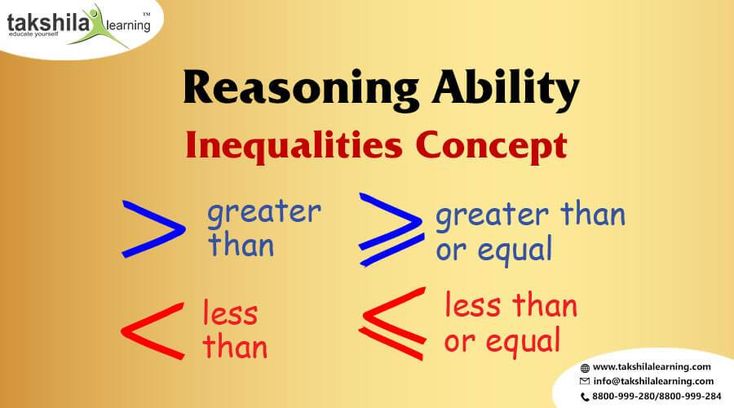Inequality questions are a common feature in competitive exams. These problems test analytical and logical reasoning skills, which are crucial for cracking exams that require critical thinking. While they may seem intimidating to some candidates, with the right approach and strategy, they can be solved efficiently. This article highlights five key tricks that can help solve inequality questions with ease and precision.
Understand the Types of Inequality Symbols
Before starting to solve the inequality questions in reasoning, one needs to familiarise oneself with the different inequality symbols:
- > (Greater than)
- < (Less than)
- >= (Greater than or equal to)
- <= (Less than or equal to)
- = (Equal to)
- ≠ (Not equal to)
Each symbol represents a specific relationship between two values. Knowing how they work is fundamental when interpreting the inequality statements presented in the exam. Be sure to practice recognising these symbols quickly, as time management is a crucial factor in competitive exams.
Solve Statements Step by Step
When reasoning about inequality, candidates are often presented with a series of statements. The trick is to solve the statements step by step, carefully analysing each one. Break the problem into smaller parts to avoid confusion.
Start by determining the relationship between the variables. In some cases, it may be necessary to derive intermediate relationships between two or more variables before concluding. This ensures that all possibilities are considered and reduces the chances of making mistakes.
Use the Transitive Property
The transitive property is one of the most powerful tools for solving inequality problems. This rule states that if:- A > B and B > C, then A > C. This property allows for the combination of inequalities to form new relationships. It is particularly useful when handling compound inequalities or chains of inequalities. For instance, if given the inequality relationships A > B, B > C, and C > D, candidates can conclude A > D without having to compare A directly with D. This not only saves time but also aids in making quick deductions.
Visualise the Inequality Relationships
It may be helpful to visualise the relationships between the variables. One way to do this is by using number lines. Plotting the unequal relationships on a number line can help clarify the relative positions of the variables involved, making it easier to compare them.
For example, consider the inequalities A > B, B > C, and C > D. On a number line, you can mark the variables in their relative positions, which visualises their relationships easily. This method is especially beneficial when dealing with multiple variables and when trying to identify the largest or smallest values in a set.
Practice with Different Types of Questions
The more one practices, the more familiar one becomes with different types of inequality questions. There are various formats, such as direct inequalities, multiple inequalities, or compound inequalities, each requiring a slightly different approach. Regular practice helps identify patterns and understand which method works best for each type of question.
Additionally, practicing with previous exam papers and sample questions can increase speed and accuracy. Familiarity with the structure of inequality questions will also boost confidence, enabling candidates to handle these problems more effectively during the actual exam.
How Professional Resources Can Enhance Preparation
For candidates seeking further practice and guidance in mastering inequality questions, professional resources are available that offer comprehensive study materials, including free PDFs and practice exercises. These resources provide in-depth explanations and step-by-step solutions to various inequality problems, ensuring that candidates are well-prepared for competitive exams.
Moreover, such platforms offer curated question sets that allow for targeted practice, helping learners improve their speed and efficiency. Consistent practice with these resources can greatly improve candidates’ problem-solving skills and performance in the reasoning sections of competitive exams.
Applying these key tricks enables candidates to tackle these problems with greater confidence and accuracy. Regular practice with diverse types of inequality questions in reasoning is essential for improving both speed and efficiency, ultimately contributing to exam success. With the right preparation, candidates can tackle inequality problems effectively and emerge victorious in their exams.
